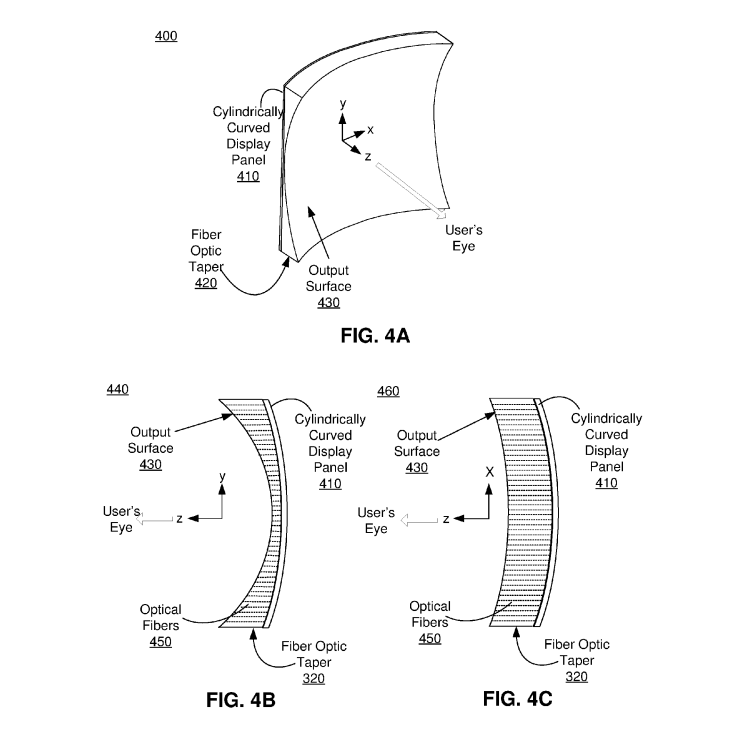Oculus patented a complicated imaging process that combines a traditional display with fiber optics. According to the patent, the result could be slim VR glasses that still offer a full field of vision (FOV).
Last August, Oculus applied for a patent for a new review. That is now under the publication of US Patent Office. The patent shows a VR glasses with a curved or flat display and an additional fiber optic. A fiber optic consists of many parallel glass fibers as optical fibers. That merges to an optic, similar to the waveguide display in Microsoft’s augmented reality glasses Hololens.
Oculus patented new display technology for VR glasses
The innovation of the patent is that on display there is a so-called “fiber optic plate.” That receives the light from the screen and correct the perspective of the lenses of VR glasses.
There, the image is magnified and hits the retina of the wearer. The magnification can be so intense according to the patent that “the entire or almost the whole field of view of the user gets in.
Slimmer form factor
According to Oculus, the new display method also allows the installation of smaller screens. That is correspondingly lighter and consume less energy, in addition to the broader field of vision. That is because they no longer have to equalize the image. So that assumes as described the fiber optics in front of the display.
The patent further describes a component or a filter to mask the surface structure of the display. That is the pixel structure or individual fibers. That should ensure a uniform image impression without annoying screen door effect.
The full patent, which describes numerous possible combinations of the screen, fiber optics, and lens optics, can be viewed here.
Whether and when the presentation process finds its way into VR glasses is not known. The free VR glasses Oculus Go is announced for next year. Also, that comes with improved lenses, but a regular LC display.
